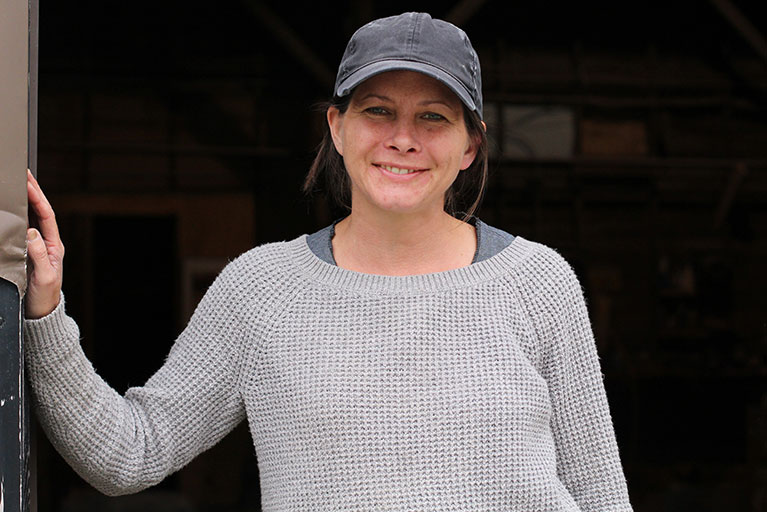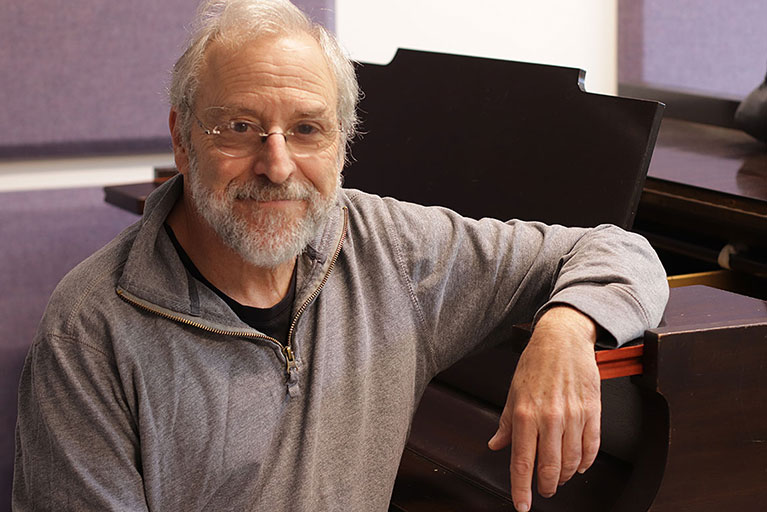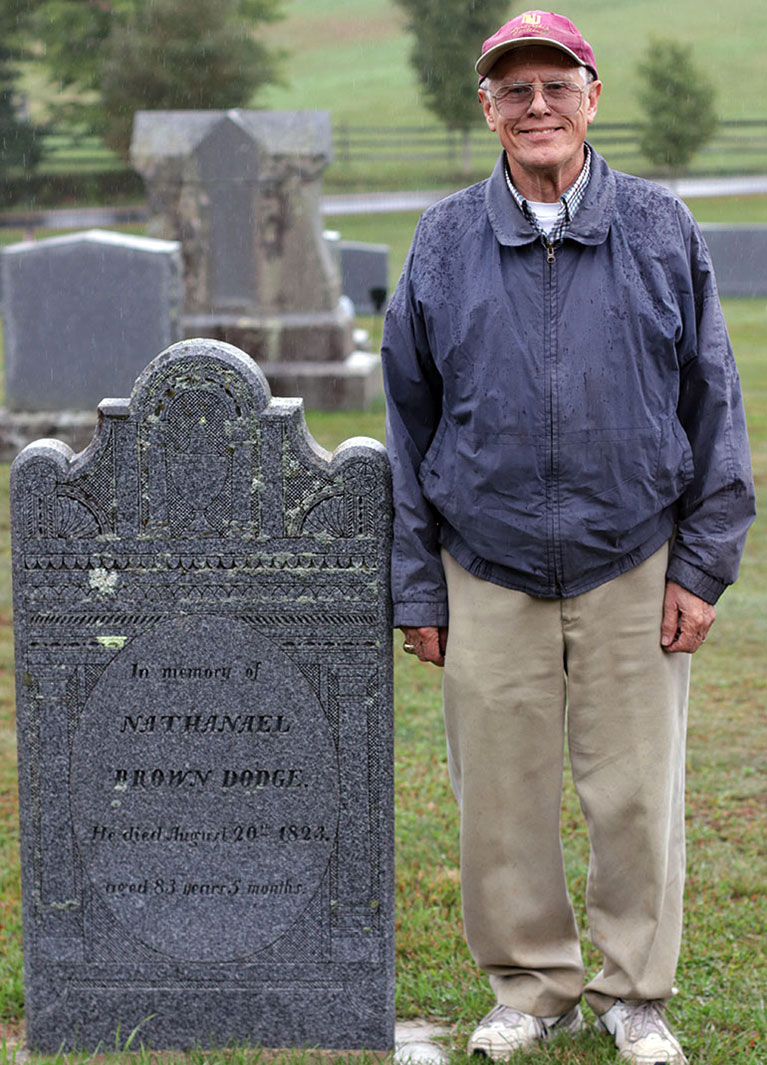Tales Behind the Tombstones
Many of Vermont’s cemeteries date back multiple centuries. They’re filled with worn-down stones that may only offer glimpses of the personal histories of the dead. But these cemeteries still hold lessons for the people who visit them today.
This Episode’s Featured Object:
Nathaniel Brown Dodge’s Slate Headstone
Mary Labate Rogstad: The top center is an urn. A lot of the symbolism has worn off. The slate has flaked off, especially the lower left quadrant of the grave marker. I see August something, 1823 maybe? And he was 83 years and 5 months at his death.
Whitney Maxfield: Well, it sat in my mother’s and father’s cellar for a long time and we were going to sell the place and had to do something with it. So then I came to the Historical Society here and said, it’s either you guys or it’s going in the trash. Cause we’ve got no place to put it, you know?
Images: Stone carver Heather Milne Ritchie outside her studio in East Barre.
Stan Charkey, the composer of the Vermont Headstones song cycle, at the piano.
Whitney Maxfield beside the restored gravestone of his ancestor, Nathaniel Brown Dodge, in Barre’s Maplewood Cemetery.
Green Mountain Graveyards website by Scott Baer and Dan Barlow
A Stone Carver’s Tools
“It’s like it bombards your senses when you start doing this,” Heather says. “It’s very physical. It’s very hard on your body. It’s very loud.”
Vermont Headstones Performance
Work by Stan Charkey, retired Marlboro College music professor, performed by Daren Jackson (baritone), Mark Hill (oboe), and Katherine Murdock (viola).
Episode Transcript
Heather: It’s a lot of noise. It’s a lot of…it’s like it bombards your senses when you start doing this. It’s very physical. It’s very hard on your body. It’s very loud.
Heather Milne Ritchie works in a long shed in East Barre. The floor is concrete. There’s a wood furnace in the corner and an enormous steel track overhead. Massive blocks of granite balance on their supports.
Heather: I always start with my diamond saw, which is basically an angle grinder with a blade on it that’s tipped in diamonds.
Heather: Like you can put all of these fancy cuts in with your saw, with a diamond tip. But then you still need a basic hammer and chisel to break the stone away.
Barre residents have quarried and worked granite since the mid-1800s. Heather continues this tradition as a sculptor and a stone carver.
Episode Credits
Before Your Time is presented by the Vermont Historical Society, the Vermont Humanities Council, and VTDigger. This episode was produced by Ryan Newswanger and Mike Dougherty, with help from Mary Labate Rogstad. Thanks to our guests, Heather Milne Ritchie, Whit Maxfield, Stan Charkey, and Dan Barlow. Music from Stan Charkey’s Vermont Headstones used by permission. Other music by Blue Dot Sessions.



